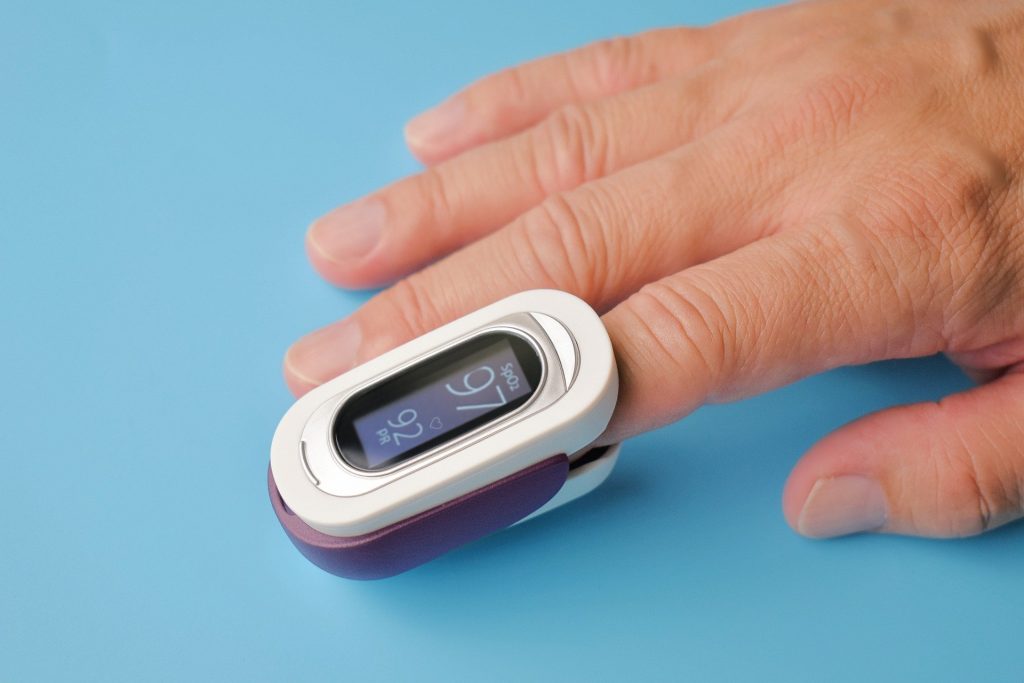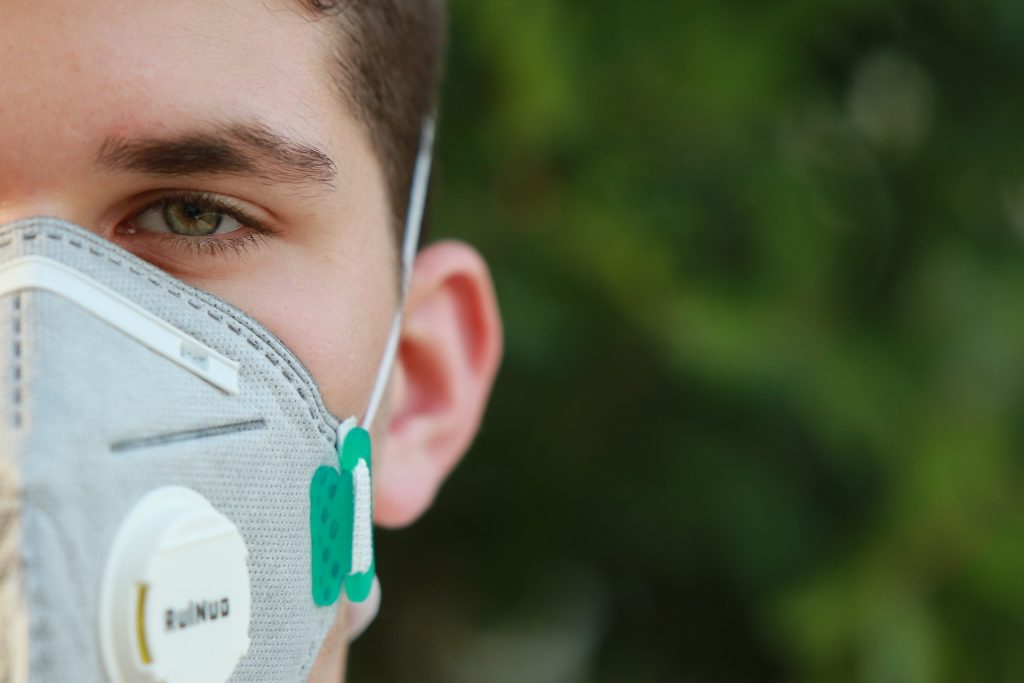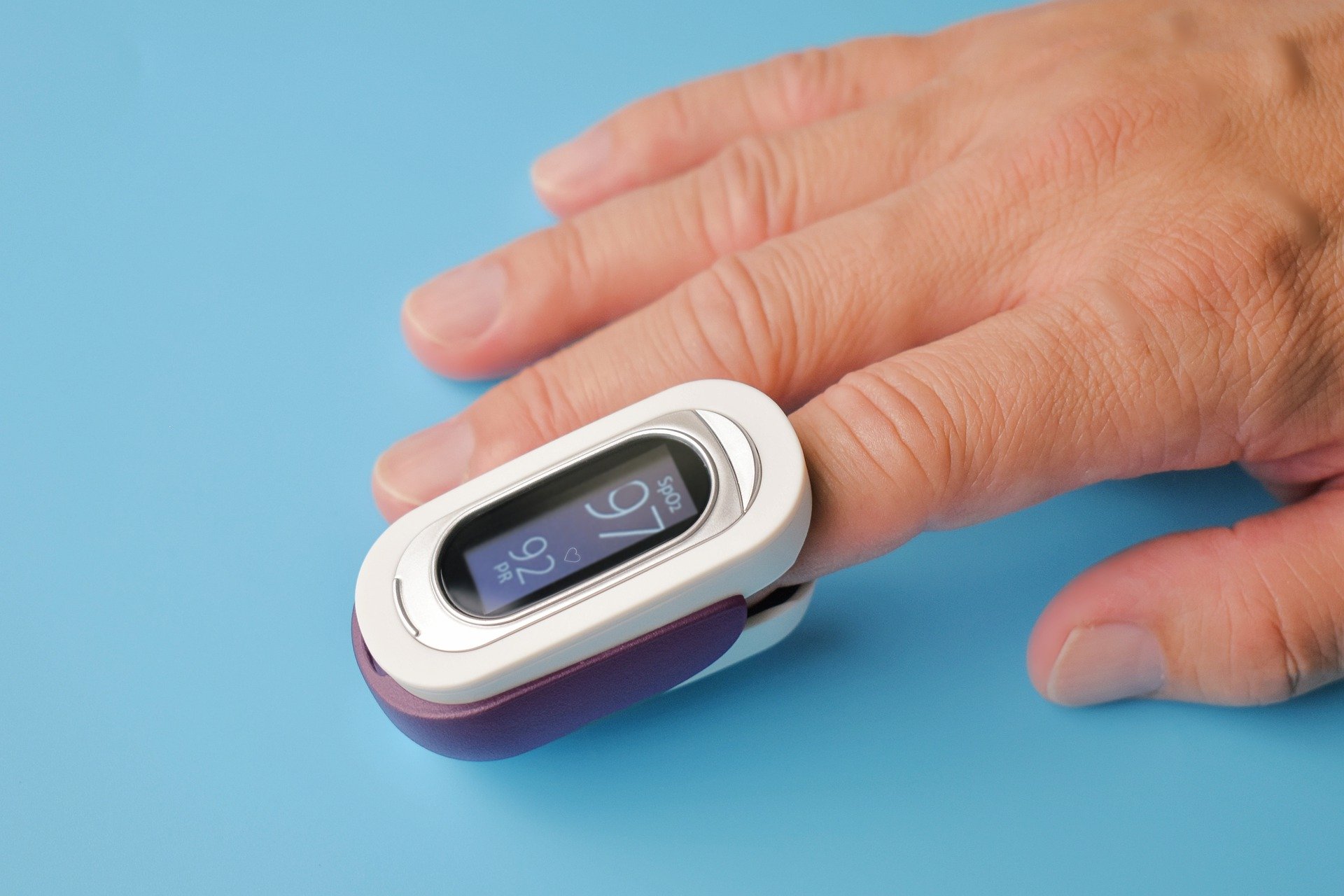
Most of the patients suffering from COVID-19 report lower oxygen levels in the bloodstream, though they may feel good. Low levels of oxygen may be an early sign which warns that medical care may be required. However, the use of the pulse oximeter to monitor oxygen saturation may be useful in patients infected with COVID-19. One must be tested if there are signs and symptoms of COVID-19 or if some close has been diagnosed with it.
If a person is suffering from a COVID-19 infection, the use of a pulse oximeter may assist them in keeping an eye on their general physical health and in finding out if they require medical healthcare services. Although, using a pulse oximeter may be helping a person to feel as if they have some control over the status of their health, however, it is not reflective of the entire health status. Oxygen levels can be measured by using a pulse oximeter. It is not the single means for knowing the extent of sickness one has.
Results of pulse oximeter might not be accurately measured in people who have a dark complexion. As a result, their levels of oxygen may be sometimes reported higher compared their actual levels. Thus, individuals who self-check their levels of oxygen must bear this in their minds while interpreting the results.
What happens to oxygen saturation in COVID infection?

Under normal conditions, our lungs function to perform the exchange of gases, thus, supplying oxygen to every cell of the body as one breathes in. A person’s healthy lungs help in maintaining the oxygenation of blood at levels between 95 to 100%. If levels of oxygen fall under 92 %, it becomes a cause of concern due to which a physician/doctor might intervene by providing a supplemental supply of oxygen.
Earlier in the COVID-19 pandemic, clinicians had started to first sound warning alarms regarding the presence of silent hypoxia. At that time, pulse oximeters were bought by most of the people who were worried that either they or their members of the family may be able to recover from a mild form of COVID-19 infections in their homes as they could regularly monitor saturation levels of blood oxygen.
How a COVID-19 infection affects one’s lung’s capability for regulating the direction of blood is a subject of interest. When the lungs are damaged by COVID19, the blood vessels in them constrict. The preliminary data suggest that people who have had COVID-19 lose the ability to breathe and can have oxygen levels that are even lower than they would be without the infection.
How to monitor the oxygen levels in blood?

Pulse oximetry is a test that is used for measuring the oxygen level or saturation of the blood. It is a simple and painless method that measures how oxygen is transported to various parts of the body which are away from the heart, for example, arms and legs.
A clip-like device or probe is attached to a particular body part, for example, a finger or an ear lobe. This probe makes use of a light source for the measurement of levels of oxygen in the blood. The information gathered will help a healthcare provider to decide if an individual requires a supplemental source of oxygen.
Pulse oximetry can be used for checking if there is a sufficient level of oxygen in the blood. We make use of sedation in surgical procedures, and these procedures can be used to test the functioning of medicines. So nurses and doctors need to be able to monitor how well medicines are working. These observations can help them figure out what’s going on.
What are the common conditions that require regular monitoring of oxygen saturation?
Normal oxygen levels in the blood vary from 75 to 100 millimeters of mercury. Oxygen levels under 60 mm of Hg are considered less and may require supplementation of oxygen which may depend on the doctor’s judgment and a particular case.
The doctors use pulse oximetry in addition to another testing to find out how well oxygen flows through the blood vessels of an individual.
How to restore normal oxygen saturation in COVID patients?
If a person is diagnosed with COVID-19, using a pulse oximeter may be helping in keeping a watch on his or her health and also, help in knowing if any emergency medical health care is required. If a person’s levels of oxygen are low, oxygen therapy is given. Levels of blood gases are re-checked over time to keep a check on oxygen supply. The oxygen is delivered by small see-through tubes known as nasal cannulae or a face mask covering the nose and mouth. This will help to work out how much oxygen is required to improve the levels of oxygen in your blood.
Many patients treated with oxygen whilst in hospital are discharged and they do not require any oxygen at home. However, few of them may require oxygen support as well in their home. One must understand the rate of flow of oxygen, oxygen supply based on the total hours per day, and equipment required for setting up. For example, one may only require oxygen during activities like bathing or getting dressed.
When a full-day oxygen requirement is there, an oxygen concentrator is most suitable. This machine acts by filtering air within the room and concentrating oxygen within it for breathing purposes. Any home-based oxygen provider can provide us with information concerning operating these and various requirements for maintaining it like washing filters, when necessary. Those with oxygen concentrators could have a backup supply in case the machine does not work due to electrical failure.
A person may require a supply of oxygen when she is moving around or performing any activity. Oxygen machines that can provide oxygen to people on the go are called ‘ambulatory oxygen’.
Centric Healthcare’s Nurses offer more knowledge about Covid safety and precautions
Reach out to Centric Healthcare’s team if you or any of your family members need help. The agency ensures to give high-quality service and care for you or your loved one. Feel free to contact us if you have any questions.
References
- https://www.hopkinsmedicine.org/health/treatment-tests-and-therapies/pulse-oximetry
- https://www.fda.gov/medical-devices/safety-communications/pulse-oximeter-accuracy-and-limitations-fda-safety-communication
- https://www.yourcovidrecovery.nhs.uk/managing-the-effects/effects-on-your-body/managing-your-oxygen/


